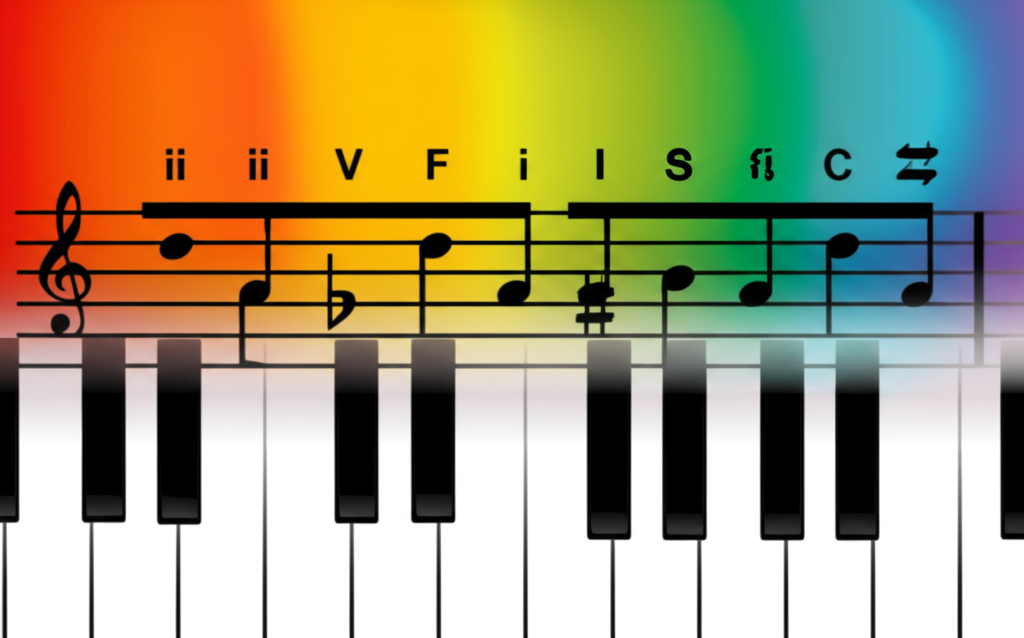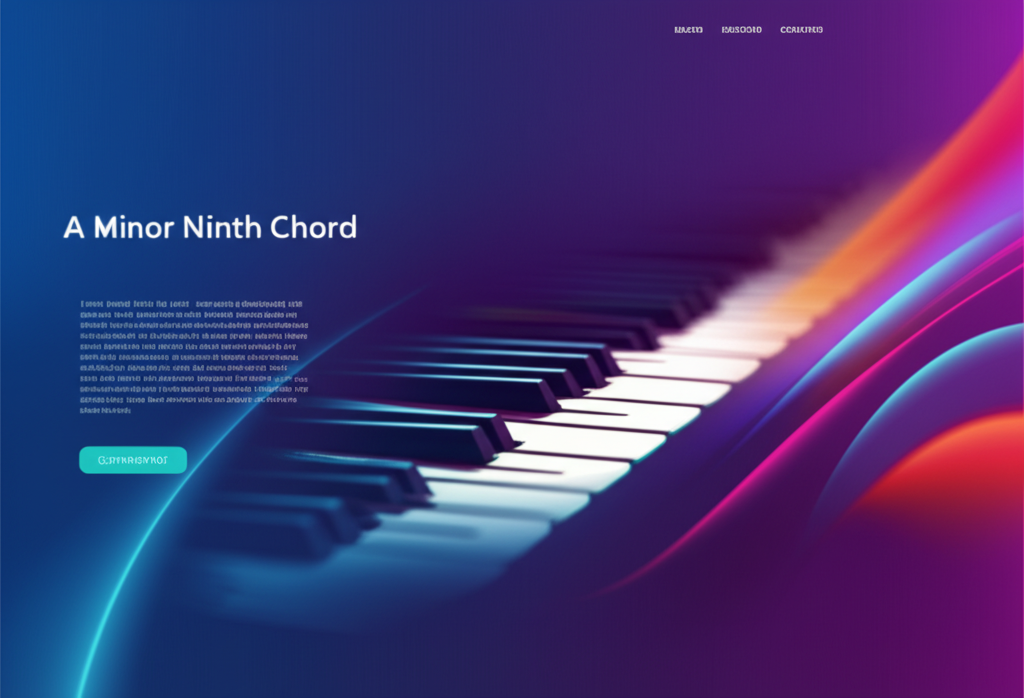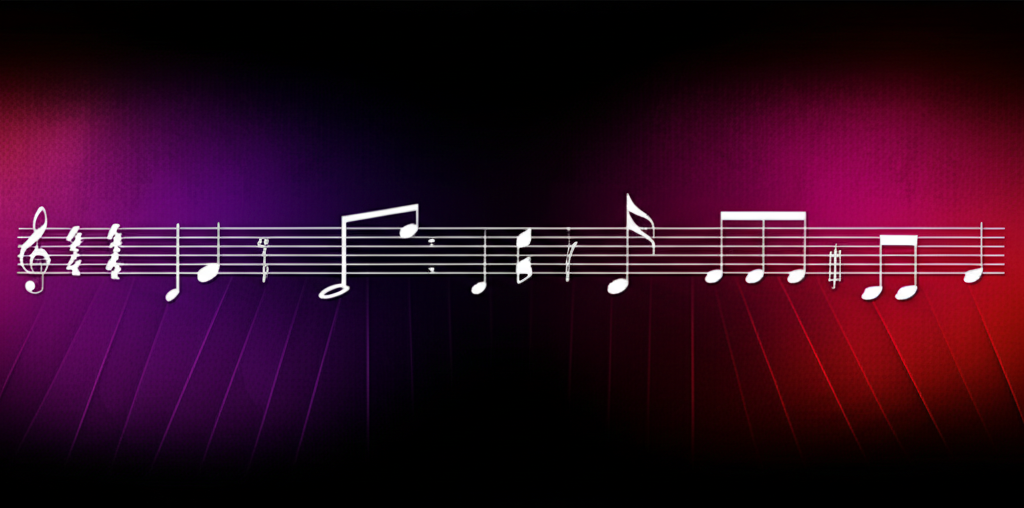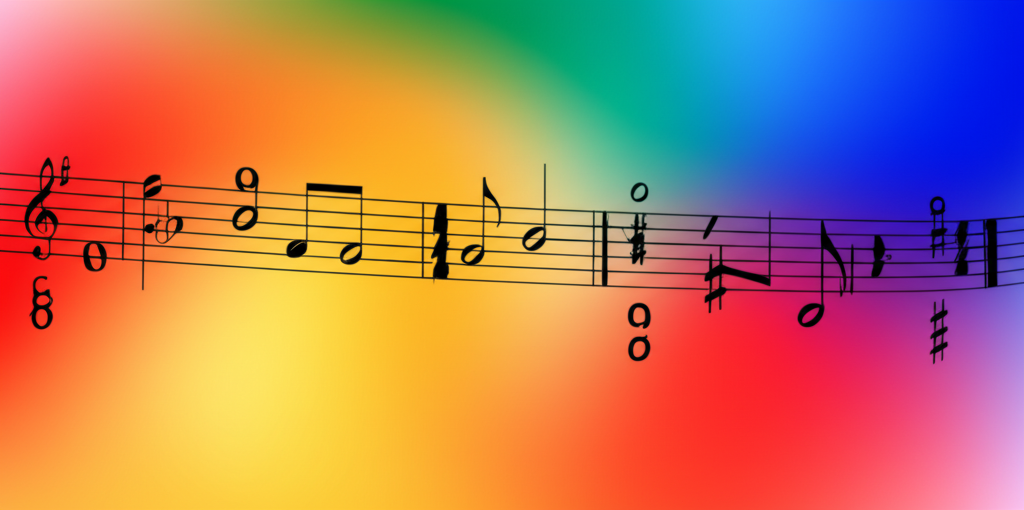
Half-Diminished Chord: The Sophisticated Minor Seventh Flat Five

b4n1
June 14, 2025, 7:03 p.m.
Half-Diminished Chord: The Sophisticated Minor Seventh Flat Five
Summary:
The half-diminished chord, also known as minor seventh flat five (m7♭5), combines the tension of diminished harmony with the sophistication of seventh chord color. This versatile chord serves crucial functions in jazz harmony, classical music, and contemporary composition, offering a perfect balance between stability and tension.
Keywords:
half-diminished chord, minor seventh flat five, m7b5, jazz harmony, ii7b5 chord, Locrian mode, diminished harmony, seventh chord extensions
Introduction:
The half-diminished chord represents one of harmony's most elegant compromises between tension and resolution. Unlike its fully diminished cousin, the half-diminished chord contains a minor seventh rather than a diminished seventh, creating a sound that's sophisticated yet approachable. This chord has become indispensable in jazz, where it often appears as the ii chord in minor key progressions, and in classical music, where it provides rich harmonic color.
Construction and Structure:
A half-diminished chord consists of a diminished triad plus a minor seventh. The intervals from the root are: minor third, diminished fifth, and minor seventh. This construction gives the chord its characteristic sound - more stable than a fully diminished chord but more tense than a regular minor seventh chord.
C Half-Diminished Chord:
The basic structure showing the diminished triad plus minor seventh:
Interval Analysis:
Interval Structure:
- Root to 3rd: Minor third (3 semitones)
- Root to 5th: Diminished fifth (6 semitones)
- Root to 7th: Minor seventh (10 semitones)
- Chord symbol: Cø7 or Cm7♭5
Functional Harmony Roles:
In functional harmony, the half-diminished chord most commonly appears as the ii chord in minor keys, where it naturally occurs in the harmonic minor scale. It also functions as a predominant chord leading to dominant harmony, and as a substitute for other chords in jazz progressions.
Jazz Context - The ii-V-i Progression:
In jazz, the half-diminished chord is essential in minor ii-V-i progressions. The ii7♭5 - V7 - im7 progression forms the backbone of countless jazz standards and provides a sophisticated harmonic foundation for improvisation and composition.
Minor ii-V-i in C Minor:
The classic jazz progression featuring the half-diminished chord:
Notación musical:
Modal Relationship - Locrian Mode:
The half-diminished chord has a strong relationship with the Locrian mode, the seventh mode of the major scale. The Locrian mode naturally produces a half-diminished chord when harmonized in thirds, making this mode essential for understanding the chord's melodic implications.
Voice Leading Properties:
The half-diminished chord excels in voice leading situations due to its combination of stable and unstable intervals. The diminished fifth creates tension that seeks resolution, while the minor seventh provides harmonic color without the extreme tension of a diminished seventh.
Classical Applications:
In classical music, half-diminished chords often appear in chromatic progressions and as color chords in romantic harmony. Composers use them to create sophisticated harmonic progressions that maintain classical voice leading principles while adding modern harmonic color.
Famous Examples:
Notable Uses in Literature:
- "Autumn Leaves" - Classic jazz standard
- "Summertime" - Gershwin's masterpiece
- Bach's Chorales - Early classical usage
- "Fly Me to the Moon" - Frank Sinatra repertoire
Chord Substitutions:
The half-diminished chord works as a substitute for several other chords, including minor sixth chords and certain dominant chords. These substitution possibilities make it valuable for reharmonization and arrangement work, allowing composers to add sophistication to simple progressions.
Improvisation Strategies:
When improvising over half-diminished chords, musicians often use the Locrian mode, melodic minor scales, or altered scales. The chord's structure suggests certain melodic approaches that highlight its unique character while providing smooth voice leading to the following harmony.
Inversions and Voicings:
Common Voicings:
Harmonic Extensions:
The half-diminished chord accepts various extensions that enhance its color without destroying its essential character. Common extensions include the ninth and eleventh, which add sophistication while maintaining the chord's functional integrity.
Contemporary Usage:
Modern composers in various genres have embraced the half-diminished chord for its sophisticated yet accessible sound. It appears in pop ballads, film scores, and contemporary classical music, often providing emotional depth and harmonic interest.
Comparison with Fully Diminished:
While fully diminished chords create maximum tension and symmetry, half-diminished chords offer a more moderate approach. They maintain some of the diminished triad's instability while the minor seventh provides a sense of resolution and harmonic grounding.
Practice Approaches:
Study Methods:
- Scale Practice: Learn Locrian mode in all keys
- Progression Work: Practice ii-V-i progressions
- Voice Leading: Study smooth connections
- Jazz Standards: Analyze real-world usage
Compositional Applications:
When composing with half-diminished chords, consider their dual nature - they can function as either tension chords requiring resolution or as color chords that add sophistication. Their versatility makes them useful in both traditional and contemporary harmonic contexts.
Historical Development:
The half-diminished chord evolved from classical harmony into jazz through the work of early jazz pioneers who recognized its potential for sophisticated harmonic progression. Its development parallels the evolution of jazz harmony from simple triads to complex extended chords.
Theoretical Significance:
Theoretically, the half-diminished chord represents an important middle ground between consonance and dissonance. It demonstrates how adding or subtracting a single semitone (compared to the fully diminished chord) can dramatically change a chord's character and function.
Performance Considerations:
Performing half-diminished chords requires attention to their unique character. The diminished fifth should be heard clearly to establish the chord's identity, while the minor seventh should provide harmonic color without overpowering the overall sound.
Cultural Impact:
The half-diminished chord has become associated with sophisticated musical expression, particularly in jazz and film music. Its sound suggests complexity and emotional depth, making it popular among composers seeking to convey nuanced feelings.
Learning Progression:
Students should approach half-diminished chords after mastering basic triads and seventh chords. Understanding its relationship to the Locrian mode and its function in ii-V-i progressions provides essential foundation for advanced harmonic study.
Fun Facts:
The half-diminished chord is sometimes called the "jazz minor chord" due to its prevalence in jazz harmony. Interestingly, it's the only seventh chord that naturally occurs in both the harmonic minor and melodic minor scales, making it uniquely versatile in minor key harmony.
Conclusions:
The half-diminished chord exemplifies sophisticated harmonic thinking while remaining musically accessible. Its perfect balance of tension and stability has made it indispensable in jazz and valuable in many other musical contexts. Understanding this chord opens doors to advanced harmonic concepts and provides composers with a powerful tool for creating emotional depth and harmonic interest. Whether used in traditional ii-V-i progressions or contemporary harmonic explorations, the half-diminished chord continues to prove its worth as one of harmony's most versatile and expressive tools.
References:
Levine, Mark. (1995). The Jazz Theory Book. Sher Music Co.
Russo, William. (1973). Jazz Composition and Orchestration. University of Chicago Press.
Persichetti, Vincent. (1961). Twentieth-Century Harmony. W. W. Norton & Company.
Coker, Jerry. (1997). Elements of the Jazz Language for the Developing Improvisor. CPP/Belwin.



















